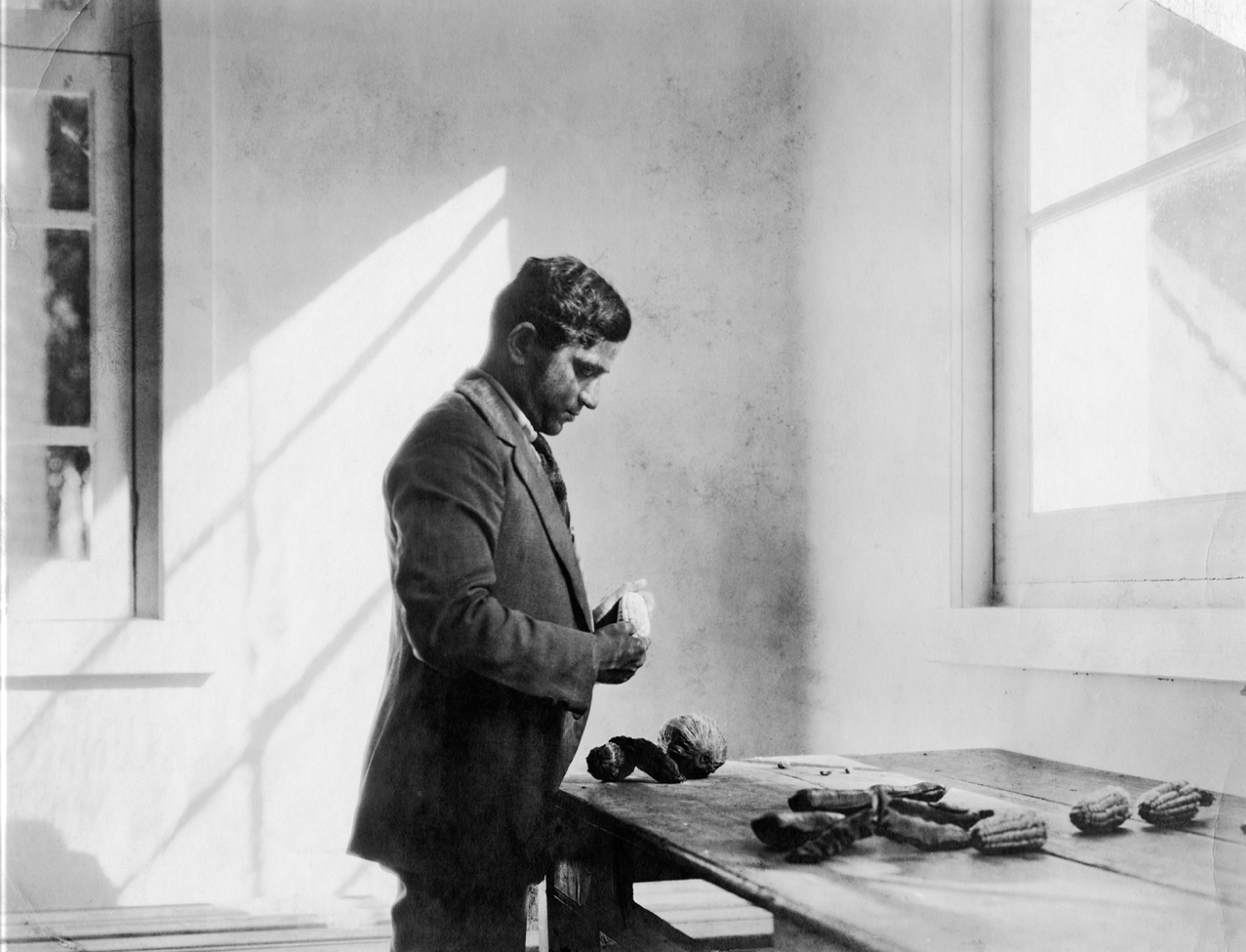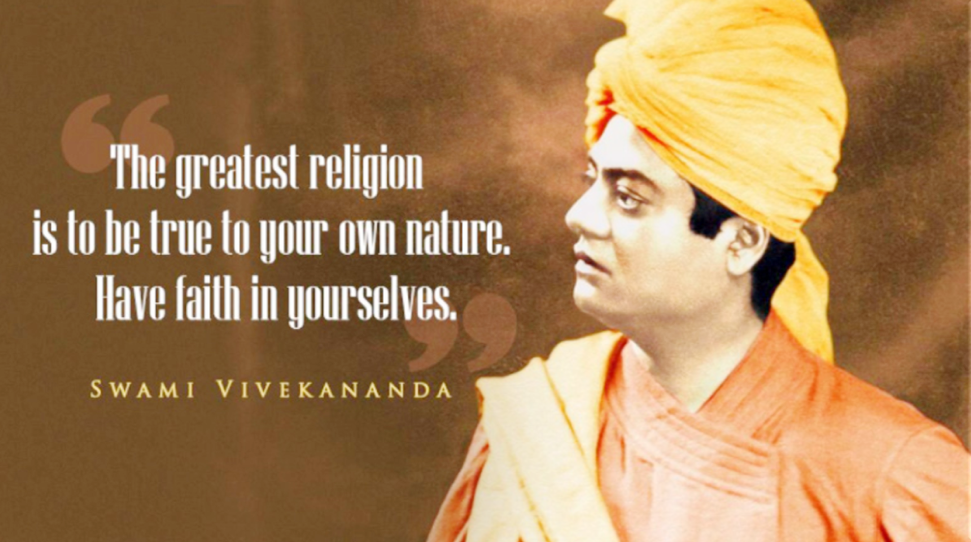Indian History
Pandurang Khankhoje & Swami Vivekananda
- 23 Aug 2022
- 9 min read
For Prelims: Important Personalities of Indian History, India’s Independence Movement, Ghadar Party
For Mains: Significance of Important Personalities in India’s Struggle for Independence
Why in News?
Lok Sabha Speaker will travel to Mexico to unveil statues of Swami Vivekananda and Maharashtra-born freedom fighter and agriculturalist Pandurang Khankhoje (1883-1967).
- The Speaker’s visit is part of India's efforts to honor lesser-known Indian-origin leaders outside India.
Who was Pandurang Khankhoje?
- Birth:
- Pandurang Khankhoje was born in Wardha, Maharashtra, in the late 19th century.
- Revolutionary Connections:
- Pandurang Khankhoje came in contact with other revolutionaries early on.
- Hindu reformer Swami Dayanand and his Arya Samaj movement, which called for a spirit of reform and social change, became the hero to a young student group led by Khankhoje.
- Khankhoje was an ardent admirer of the French Revolution and of the American War of Independence.
- Before leaving India for training in abroad, he visited Bal Gangadhar Tilak, by who he was inspired.
- Pandurang Khankhoje came in contact with other revolutionaries early on.
- Life Abroad:
- Khankhoje decided to go abroad for further training in revolutionary methods and militaristic strategy.
- After spending time with nationalists from Japan and China, Khankhoje eventually moved to the US, where he enrolled in college as a student of agriculture.
- A year later, he joined the Mount Tamalpais Military Academy in California to fulfil his original purpose of leaving India.
How was Khankhoje associated with the Indian Independence Movement?
- Khankhoje & Ghadar Party:
- In the US, Khankhoje met Lala Har Dayal, an Indian intellectual teaching at Stanford University.
- Har Dayal had begun a propaganda campaign, publishing a newspaper that featured patriotic songs and articles in the vernacular languages of India.
- This was the seed from which the Ghadar Party would emerge.
- Har Dayal had begun a propaganda campaign, publishing a newspaper that featured patriotic songs and articles in the vernacular languages of India.
- Khankhoje was one of the founding members of the Ghadar Party, established by Indians living abroad in 1913, mostly belonging to Punjab.
- Its aim was to lead a revolutionary fight against the British in India.
- In the US, Khankhoje met Lala Har Dayal, an Indian intellectual teaching at Stanford University.
What is the Connection between Khankhoje and Mexico?
- Connections with Mexicans in the US:
- At the military academy in the US, Khankhoje met many people from Mexico.
- Khankhoje was inspired by “The Mexican Revolution of 1910” which led to the overthrow of the dictatorial regime.
- While he was reaching out to Indians working on farms in the US with the aim of discussing the idea of Indian independence with them, he met with Mexican workers as well.
- He reached out to Bhikaji Cama in Paris, and met with Vladimir Lenin in Russia among other leaders, seeking support for India's Independence.
- He was facing deportation from Europe and he could not go to India, so he sought shelter in Mexico.
- At the military academy in the US, Khankhoje met many people from Mexico.
- Life in Mexico:
- With the help of some friends in Mexico, he was appointed a professor at the National School of Agriculture in Chapingo, near Mexico City.
- He researched corn, wheat, pulses and rubber, developing frost and drought-resistant varieties, and was part of efforts to bring in the Green Revolution in Mexico.
- Later on in the 20th Century, the American agronomist Dr Norman Borlaug, called the Father of the Green Revolution in India, brought the Mexican wheat variety to Punjab.
- Khankhoje was revered as an agricultural scientist in Mexico.
- The renowned Mexican artist Diego Rivera painted murals that featured Khankhoje, including one titled ‘Our Daily Bread’ that prominently depicted him breaking bread with people seated around a table.
Who was Swami Vivekananda?
- Birth:
- Swami Vivekanand ,original name Narendranath Datta was born on 12th January, 1863.
- National Youth Day is held every year to observe the birth anniversary of Swami Vivekananda.
- In 1893, upon the request of Maharaja Ajit Singh of the Khetri State, he took the name ‘Vivekananda.’
- Contributions:
- Introduced the world to the Indian philosophies of Vedanta and Yoga.
- He preached ‘neo-Vedanta’, an interpretation of Hinduism through a Western lens, and believed in combining spirituality with material progress.
- Laid the greatest emphasis on education for the regeneration of our motherland. Advocated a man-making character-building education.
- Best known for his speech at the World Parliament of Religion in Chicago in 1893.
- Spelt out the four pathways of attaining moksha from the worldly pleasure and attachment in his books:
- Raja-yoga
- Karma-yoga
- Jnana-yoga
- Bhakti-yoga
- Netaji Subhas Chandra Bose had called Vivekananda the “maker of modern India.”
- Introduced the world to the Indian philosophies of Vedanta and Yoga.
- Associated Organisations:
- He was the chief disciple of the 19th-century mystic Ramakrishna Paramhansa and established the Ramakrishna Mission in 1897.
- Ramakrishna Mission is an organization which works in the area of value-based education, culture, health, women's empowerment, youth and tribal welfare and relief and rehabilitation.
- In 1899, he established Belur Math, which became his permanent abode.
- He was the chief disciple of the 19th-century mystic Ramakrishna Paramhansa and established the Ramakrishna Mission in 1897.
- Death:
- He died at Belur Math in 1902.
- Belur Math, located in West Bengal, is the headquarters of Ramakrishna Math & Ramakrishna Mission.
What is the Ghadar Party?
- It was an Indian revolutionary organisation, with the aim to liberate India from British rule.
- ‘Ghadar’ – also written as ‘Ghadr’ in English – is an Urdu word for rebellion.
- The party was formed in the United States in 1913, by migrant Indians, mostly Punjabis. However, the party also included Indians from all parts of India.
- Motive was to wage a nationwide armed struggle against British colonialism in India.
- The party was established as the Hindi Association of Pacific Coast under the leadership of Lala Har Dayal with Baba Sohan Singh Bhakna as its president.
- The party is known for setting the foundation for future Indian revolutionary movements and served as a stepping stone for independence.
- Most members of the Ghadar party came from the peasantry who first began migrating from Punjab to cities in Asia like Hong Kong, Manila and Singapore at the dawn of the 20th century.
- Later, with the rise in the lumber industry in Canada and the US, many moved to North America, where they thrived – but also became victims of institutionalised racism.
- The Ghadar movement ‘inspired to transpose egalitarian values (Egalitarianism) of American culture in the social framework of colonial India’.
- Egalitarianism is a doctrine based on the notion of equality, namely, that all people are equal and deserve equal treatment in all things.
UPSC Civil Services Examination, Previous Year Questions (PYQs)
Prelims
Q. The Ghadr (Ghadar) was a: (2014)
(a) revolutionary association of Indians with headquarters at San Francisco
(b) nationalist organization operating from Singapore
(c) militant organization with headquarters at Berlin
(d) communist movement for India’s freedom with headquarters at Tashkent
Ans: (a)
Mains
Q. What does each of the following quotations mean to you?
“Every work has got to pass through hundreds of difficulties before succeeding. Those that persevere will see the light, sooner or later.”- Swami Vivekananda. (2021)
“Condemn none: if you can stretch out a helping hand, do so. If not, fold your hands, bless your brothers, and let them go their own way.” – Swami Vivekananda. (2020)








